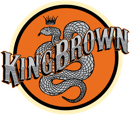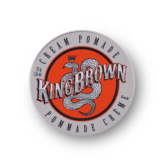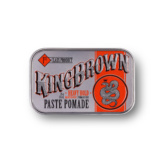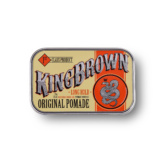Hair loss is a common issue that many of us face at some point in our lives. It’s a natural part of aging, but it can be distressing and affect our confidence. Understanding the stages of male hair loss can help in coping with the changes and exploring potential solutions. Let’s walk through the journey, step by step, in a straightforward manner.
Stage 1: The Early Signs
The journey often begins with subtle changes that are easy to miss. In the early stages, you might notice a slight thinning of hair around the temples. This is often the first sign that hair loss is starting, but it’s so gradual that it can be hard to notice at first. You might see more hair on your pillow in the morning or in the shower drain. This stage can last for several years without significant progression.
Early Intervention: Treatments to Consider
Noticing the early signs of hair loss signals the exact time to consider treatment options that can help slow down or even reverse the process. It’s important to start treatment as early as possible and stick with it over a period of months, to give you the best chance of maintaining your hair.
Our formula uses proven and safe ingredients to nourish the scalp and encourage hair regrowth. Developed in an FDA-approved facility the key focus ingredient Procapil® has been clinically proven to increase hair growth and reduce hair loss in both men and women.
Procapil® is formulated to work on all types of hair and can help to regrow new hairs by providing the nutrients necessary for healthy follicles to grow at their optimal rate. This means your scalp will improve and retain its health no matter what stage you’re at in the journey: whether you’re just starting to thin or have been dealing with hair loss for years, or even just wanting to take preventative measures, using this product will help improve both density levels plus overall thickness and appearance.
Procapil® is made up of 3 active ingredients:
- Oleanolic Acid which is known for its ability to inhibit the enzyme 5-alpha-reductase. This enzyme is involved in the conversion of testosterone into dihydrotestosterone (DHT)
- Biotinyl-GHK a peptide to strengthen hair follicles and stimulate hair growth
- Apigenin, to improve microcirculation in the scalp, which can further benefit hair follicle health and hair growth.
No two humans are the same, lifestyle choices, stress levels, hormone imbalances and genetics can cause varying levels of hair loss, so it’s important to note that the results you should expect will be unique to you.
Topical hair growth products take time to produce results. To give yourself a chance to see visible improvements in hair health or growth, you must be patient and use the products consistently as directed.
If you receive no noticeable results within 3 months of use, consider discontinuing and consulting further medical advice.
This type of treatment is not recommended for cases of severe hair loss or those who are after results that may only be achieved through more drastic specialist medical treatment.
Giving a treatment a good go is what this is all about, after all, you’ve got plenty to lose if you don’t. For now though, let’s explore the next stages of hair loss.
Stage 2: Receding Hairline
As time goes on, the hairline starts to recede. This means that the hair at the front of your head, particularly around the temples, begins to thin out and move backward. This stage is often more noticeable and can create a ‘M’ shape on the forehead. While it’s more apparent, many men still have a full head of hair and can style it to cover up the changes.
Stage 3: Thinning on the Crown
The next stage usually involves thinning on the crown, which is the top part of your head. This can happen simultaneously with the receding hairline or follow it. The thinning on the crown starts as a small bald spot that gradually expands. At this point, you might start to see more scalp when you look in the mirror or from above.
Stage 4: More Noticeable Hair Loss
When the hairline and the crown thinning become more pronounced, hair loss becomes more noticeable. This stage is often characterized by a significant reduction in hair density. The ‘M’ shape at the hairline becomes deeper, and the bald spot on the crown enlarges. Styling your hair to hide the thinning areas becomes more challenging.
Stage 5: The U-Shape
As hair loss progresses, the thinning areas at the hairline and crown eventually meet. This creates a ‘U’ shape around the sides and back of your head, leaving a more noticeable bald area on top. At this stage, the hair on the sides and back is often still thick and healthy, providing a contrast to the thinning areas.
Stage 6: Advanced Hair Loss
In the advanced stages, the hair loss becomes extensive. The bald area on top of the head widens, leaving only a narrow band of hair around the sides and back. This band can also start to thin out. At this point, many men opt for shorter haircuts or even shave their heads entirely to create a more uniform look.
Stage 7: The Final Stage
The final stage of male hair loss leaves very little hair on the top of the head. The remaining hair is mostly around the sides and back, forming a ring. This is often referred to as the ‘horseshoe’ pattern. In this stage, hair density is very low, and the scalp is mostly exposed.
Male hair loss is a common and natural process that many men go through. Understanding the stages can help in recognizing the signs early and exploring various ways to cope with the changes. Whether you choose to embrace your new look, seek treatments, or opt for a hair transplant, the key is to find a solution that makes you feel comfortable and confident.
Remember, hair loss doesn’t define you; your confidence and how you carry yourself do.





